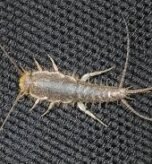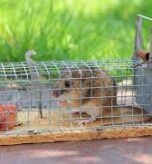Spring’s arrival often brings the familiar buzz of bees, a welcome sign of nature awakening. However, certain buzzing sounds can signal an unwelcome guest, especially when you find nickel-sized holes in your wooden structures. These distinct cylindrical holes are typically the work of carpenter bees, insects known for their wood-boring habits. People often mistake them for bumblebees due to their similar appearance. Yet, carpenter bees have unique behaviors that require specific knowledge for effective management. This guide clarifies the characteristics, potential impacts, and management strategies for carpenter bees. We emphasize a balanced approach that respects their vital role as pollinators.
Identifying Carpenter Bees: More Than Just a “Big Bee”
Correctly identifying carpenter bees is the first step toward managing them properly.
Carpenter Bees vs. Bumblebees
Distinguishing carpenter bees from bumblebees is crucial for taking the right action. The primary difference is their abdomen. A carpenter bee has a smooth, shiny, and black abdomen that appears hairless. In contrast, a bumblebee has a fuzzy abdomen, often with yellow stripes. Carpenter bees are also among the largest native bees in the United States, typically ranging from 1/2 to 1 inch long. In sunlight, their wings display an iridescent quality, while bumblebee wings are more translucent.
Common Species in the U.S.
Carpenter bees in the United States are generally black or a mix of black and yellow. Males are distinctive, often featuring white stripes or patches on their faces.
- Eastern Carpenter Bee (Xylocopa virginica): Found across the eastern and central U.S., this bee has fuzzy yellow or white hair on its front half and a shiny black abdomen.
- Southern Carpenter Bee (Xylocopa micans): Common in the Southeast, this species is entirely black with a metallic blue or green sheen.
- Valley Carpenter Bee (Xylocopa varipuncta): In the western U.S., the females are shiny black while the males are fuzzy and golden-brown, earning them the nickname “teddy bear bees.”
Do Carpenter Bees Sting? Separating Fact from Fear
Many people worry about a carpenter bee’s ability to sting. It’s critical to understand the difference between males and females in this regard.
Male Carpenter Bees: Harmless Bluster
Male carpenter bees do not have stingers and cannot sting you. Their aggressive-seeming behavior, like hovering near people, is a territorial bluff. While they might bump into you, they are not attacking. You can safely divert their blustering by throwing small objects for them to chase.
Female Carpenter Bees: Capable but Docile
Conversely, female carpenter bees do have a stinger and can sting multiple times. Unlike honeybees, their stingers are smooth and do not detach. However, females are generally docile and non-aggressive, focusing on building their nests. A female will only sting if you provoke her, for instance, by handling her or disturbing her nest. The pain from a carpenter bee sting is generally less severe than a honeybee’s. It is important to know that carpenter bees do not bite; what might feel like a “bite” is a sting.
Carpenter Bee Damage: When Pollinators Become Pests
While they are important pollinators, the nesting habits of carpenter bees can lead to significant property damage over time.
Nesting Habits and Preferred Woods
Carpenter bees are solitary insects. Each female builds and provisions her own nest. She creates a perfectly round entrance hole, about ½ inch in diameter, by vibrating her body and rasping the wood with her mandibles. The tunnel typically goes in about an inch before turning to follow the wood grain for six inches or more. Carpenter bees do not eat wood; they excavate it to create tunnels.
They prefer weathered softwoods like redwood, cedar, cypress, and pine. You will often find their nests in unpainted wood on eaves, rafters, fascia boards, siding, decks, and patio furniture. They frequently reuse nesting areas, expanding their tunnel networks each year.
Signs of a Carpenter Bee Infestation
Key indicators of a carpenter bee infestation include:
- Deep, nickel-sized, perfectly round holes in wood.
- Sawdust-like frass on the ground below the holes.
- Yellowish-brown stains on the wood beneath the entrance, which is bee excrement.
- Faint chewing sounds coming from within the wood.
- Male bees hovering protectively near the holes.
- Increased woodpecker activity, as they feed on bee larvae and cause further damage.
Minor tunneling might seem insignificant at first. However, repeated burrowing can weaken wooden structures, leading to significant damage if you don’t address it.
The Ecological Importance of Carpenter Bees as Pollinators
Despite their potential for damage, carpenter bees play a beneficial role as pollinators. They are effective “buzz pollinators,” which is essential for many wildflowers, garden plants, and crops like tomatoes and eggplants. They feed on nectar for energy and pollen for protein. It’s worth noting that some carpenter bees engage in “nectar robbing.” This behavior involves cutting into the base of deep flowers to access nectar directly, bypassing pollination.
How to Treat a Carpenter Bee Sting
If a carpenter bee stings you, take prompt and appropriate action.
Immediate First Aid
- Clean the Area: Gently wash the site with soap and lukewarm water.
- No Stinger: You typically don’t need to remove a stinger, as it doesn’t detach.
- Apply Cold: Use a cold compress on the site for 15-20 minutes to reduce swelling and pain.
- Pain Relief: You can take over-the-counter medications like ibuprofen or acetaminophen.
- Itch Relief: Apply antihistamine creams, hydrocortisone, or calamine lotion to soothe itching.
- Monitor: Watch the site for signs of infection, such as increasing redness or pus, and avoid scratching.
When to Seek Medical Attention for Allergic Reactions
Seek immediate medical attention for severe reactions. Signs of anaphylaxis include:
- Difficulty breathing
- Swelling of the face or throat
- Hives or a rash spreading from the sting site
- Dizziness or loss of consciousness
In these medical emergencies, call 911 immediately.
Preventing Carpenter Bees and Protecting Your Property
Effective management often involves proactive prevention to protect your property while preserving the bees’ role as pollinators.
Make Wood Unattractive
Carpenter bees prefer unpainted and weathered wood. Regularly paint, varnish, or pressure-treat exterior wood surfaces to deter them. When possible, use hardwoods like oak for construction, as they are less appealing to the bees.
Seal and Repair Damage
Fill any existing cracks or holes in wood with steel wool, caulk, or wood putty. We advise waiting until new bees have emerged in the spring before you fill the tunnels. Once filled, paint or varnish the repaired surfaces.
Use Natural Deterrents
- Spray susceptible areas with a mix of citrus or almond oil and water.
- Use sounds from wind chimes or music to disrupt bees near nests.
- Hang fake wasp nests, as carpenter bees avoid them.
- Plant deterrents like citronella or lavender near vulnerable wood.
Provide Alternative Nesting Sites
To encourage carpenter bees to nest away from your home, place scrap blocks of soft, untreated wood or pre-drilled blocks in a different part of your yard.
When to Call Professional Pest Control
For significant infestations or hard-to-reach nesting sites, we recommend engaging a professional pest control service. Professionals can safely apply targeted treatments and offer ongoing protection plans.
Conclusion: Coexisting with Carpenter Bees
In summary, carpenter bees are vital pollinators that are generally docile, despite their potential to damage property. A balanced approach is crucial. Prioritize preventive and non-chemical methods to safeguard your home and these beneficial insects. By understanding their behavior and using proactive strategies, homeowners can mitigate damage while supporting the natural ecosystem.



